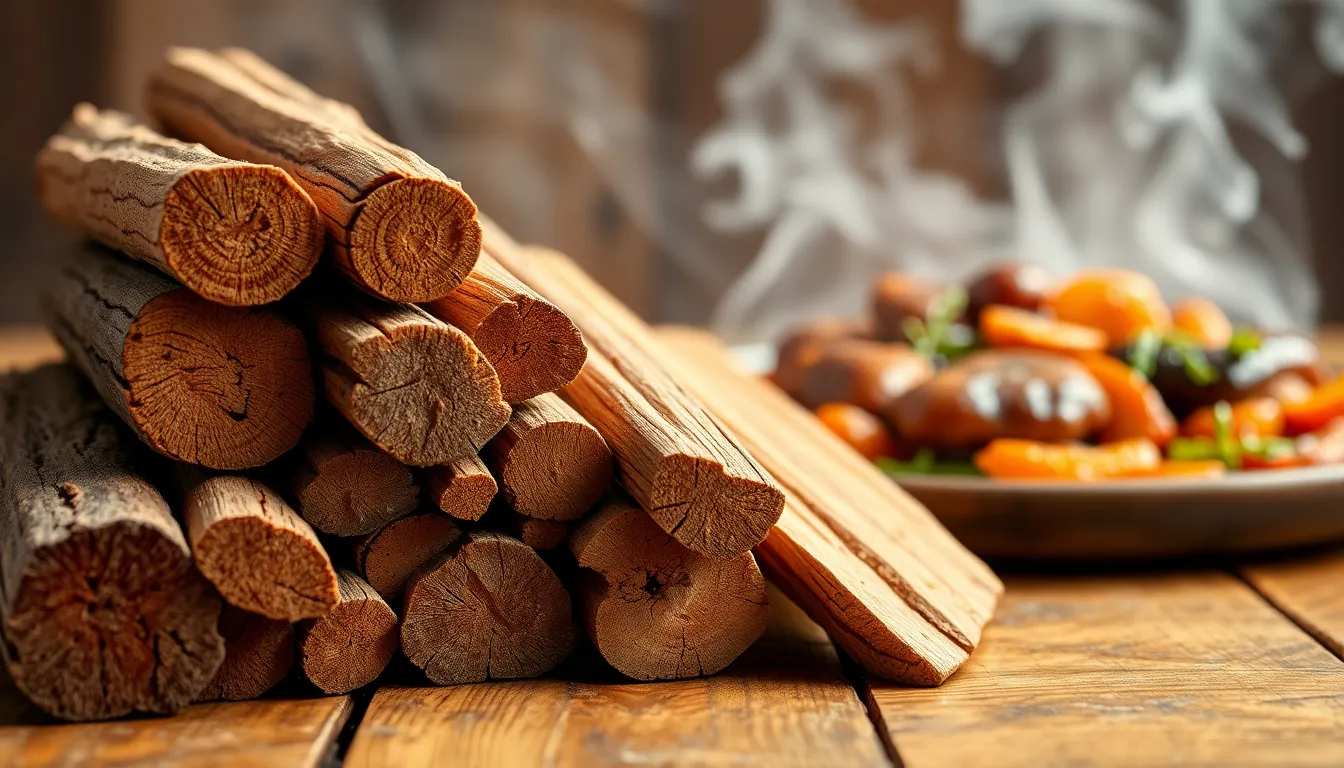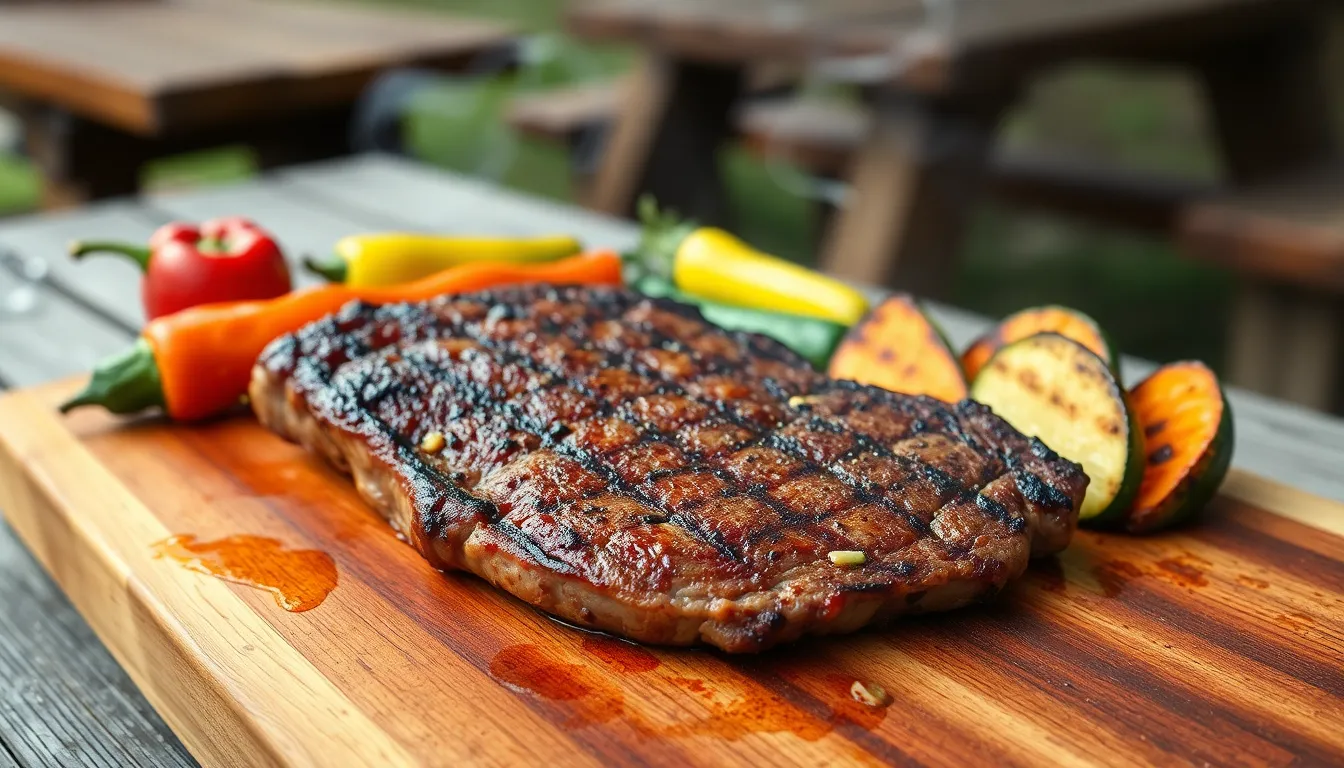Smoky flavors have a way of transforming ordinary dishes into extraordinary culinary experiences. Imagine biting into a perfectly grilled steak that dances with hints of hickory or savoring a smoky chipotle sauce that ignites your taste buds like a fireworks show. It’s not just about taste; it’s an adventure that takes food lovers on a flavorful journey.
Table of Contents
ToggleUnderstanding Smoky Flavors
Smoky flavors significantly enhance dishes, adding depth and complexity. Chefs and home cooks alike utilize these appealing notes to create memorable culinary experiences.
Definition of Smoky Flavors
Smoky flavors arise from the absorption of smoke compounds into food. These compounds include phenols and aromatics, which contribute to the signature taste. Common descriptors for smoky flavors encompass earthy, charred, and robust. People often associate these flavors with barbecued meats, smoked cheeses, or roasted vegetables. Each variant varies in intensity and profile, making smoky flavors versatile in different dishes.
Sources of Smoky Flavors
Numerous sources produce smoky flavors, including natural and artificial methods. Smoking techniques, such as cold or hot smoking, introduce distinct characteristics. Various wood types—oak, hickory, or mesquite—provide unique smokiness profiles. Culinary experts frequently utilize spices like smoked paprika or chipotle for an added kick. Liquid smoke offers an accessible option for infusing smoky notes without a smoker. Grilling or roasting food over an open flame also enhances the overall smoky taste.
The Science Behind Smoky Flavors

Smoky flavors stem from complex chemical interactions. These flavors enrich dishes, adding appeal through unique compounds.
Chemical Compounds Contributing to Smokiness
Phenols play a major role in smoky flavors. Compounds such as guaiacol and syringol contribute to the distinct aroma and taste. Other substances include carbonyls and organic acids, which enhance depth and richness. Variation in these compounds occurs based on the smoking technique used. Different wood types, like hickory or mesquite, produce distinct flavor profiles due to their unique compound compositions. Understanding these chemical nuances helps chefs create memorable dishes.
How Smoky Flavors Are Created
Creating smoky flavors involves several techniques. Cold smoking imparts a light flavor to foods, while hot smoking cooks the ingredient and enhances its smokiness. Various wood chips, such as applewood or cherrywood, provide unique tastes during the smoking process. When using spices like smoked paprika, the flavors intensify with heat. Liquid smoke offers a convenient alternative, imbuing dishes with smoky goodness without the need for traditional smoking methods. Each technique influences the overall flavor experience, allowing for versatility in culinary applications.
Popular Foods with Smoky Flavors
Smoky flavors complement a variety of dishes, enhancing both taste and aroma. Popular culinary choices include meats, vegetables, and side dishes that embody these rich, robust characteristics.
Smoky Meats and Barbecues
Barbecued meats dominate the smoky flavor scene. Steak infused with hickory creates a mouthwatering experience, while ribs coated in a robust mesquite rub elevate any meal. Pork is often smoked to perfection, allowing flavors to deepen during the cooking process. Smoked sausage delivers a savory bite that pairs well with tangy sauces. Each variety benefits from specific wood choices that impart unique characteristics, making the selection of smoking technique critical in achieving desired smoky profiles.
Smoky Vegetables and Sides
Smoky flavors also extend to vegetables, providing a hearty complement to many dishes. Roasted bell peppers develop a sweet, smoky essence when cooked over an open flame. Grilled zucchini and eggplant absorb those aromatic compounds, enhancing their natural flavors. Additionally, smoky beans, such as black beans seasoned with smoked paprika, add richness to vegetarian meals. Incorporating smoked vegetables into salads or grain bowls introduces complexity, transforming simple side dishes into exciting culinary experiences.
The Role of Smoky Flavors in Cooking
Smoky flavors significantly enhance culinary creations. They add depth and intrigue, making dishes memorable for chefs and home cooks alike.
Enhancing Dishes with Smokiness
Smokiness transforms ordinary meals into extraordinary experiences. Grilled steak gains new dimensions when infused with hickory, while smoky chipotle sauce intensifies flavor profiles. Chefs often employ different smoking techniques to achieve the desired aroma and taste. Techniques like cold smoking and hot smoking allow for creating unique profiles, catering to diverse preferences. Vegetables, too, benefit from smoky notes; roasted bell peppers and grilled zucchini can elevate vegetarian dishes. Popular options such as hickory-infused ribs and smoked sausages showcase how smokiness enhances protein flavors, creating a rich eating experience.
Balancing Smoky Flavors with Other Tastes
Balancing smoky flavors with other taste elements is crucial for harmonious dishes. Sweet components, like honey or brown sugar, counteract intense smokiness, creating a perfect blend. Acidic ingredients, such as citrus or vinegar, cut through the richness, refreshing the palate. Combining spicy elements, like chili flakes or cayenne pepper, complements the robust nature of smoky flavors while introducing heat. Understanding these interactions allows chefs to craft well-rounded meals that engage the taste buds. Thoughtful pairings enhance the sophistication of smoky dishes, ensuring enjoyment in every bite.
Smoky flavors offer a unique dimension to culinary creations that can’t be overlooked. They provide an opportunity for chefs and home cooks alike to explore rich taste profiles that elevate everyday meals. With the right techniques and ingredients, smoky nuances can transform simple dishes into extraordinary experiences.
Embracing these flavors allows for creativity in the kitchen. Whether it’s through traditional smoking methods or innovative spice blends, the versatility of smoky elements enhances a wide range of foods. By understanding how to balance these flavors with other taste components, cooks can create memorable meals that leave a lasting impression. Smoky flavors are not just a trend; they’re a timeless addition to the culinary landscape.




